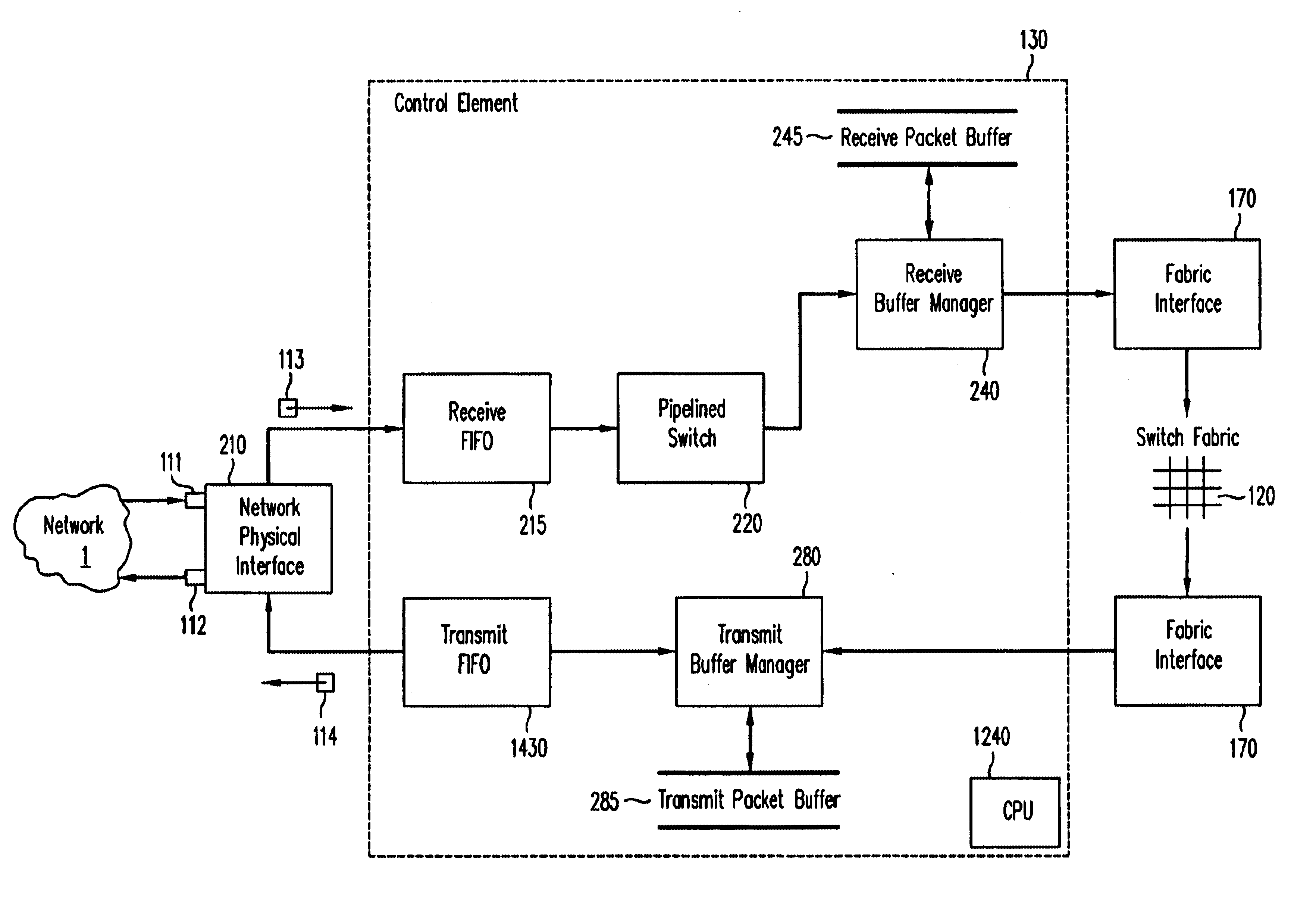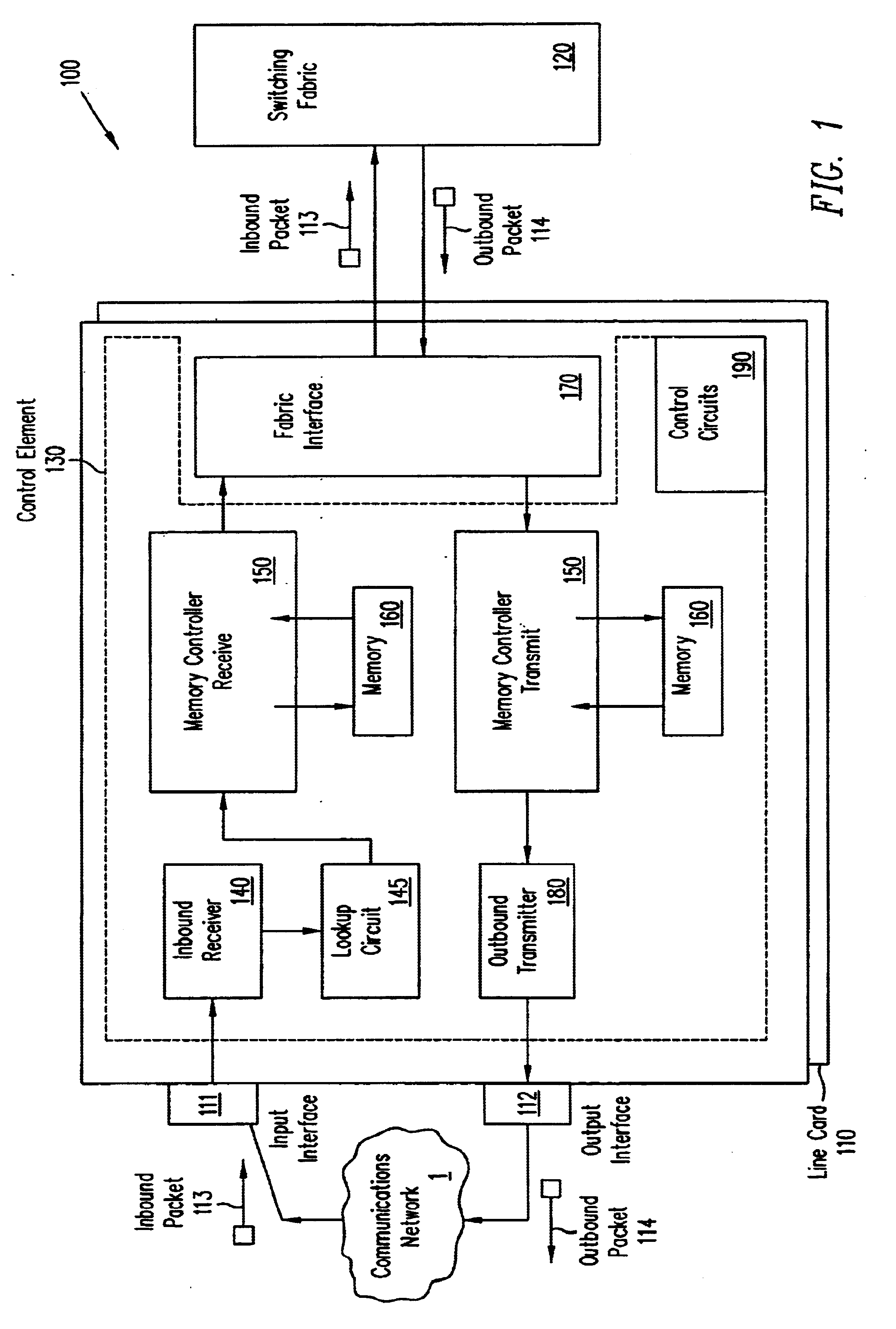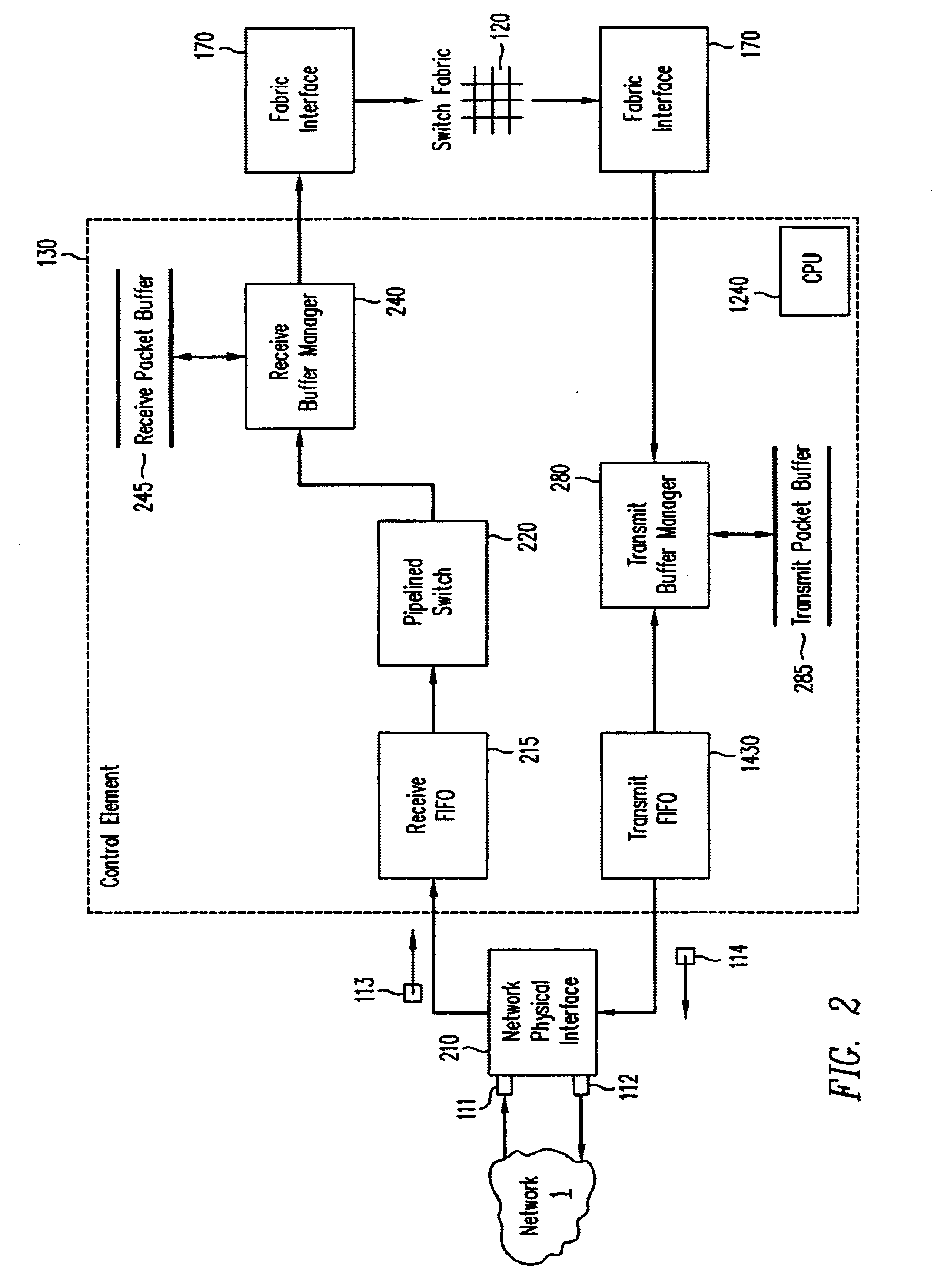Flexible engine and data structure for packet header processing
a data structure and packet header technology, applied in the field of communication devices, can solve the problems of only limited success in providing the necessary increase in throughput speed, high packet latency, and inability of general purpose digital computers to perform the necessary lookup and queue management functions using software in real tim
- Summary
- Abstract
- Description
- Claims
- Application Information
AI Technical Summary
Problems solved by technology
Method used
Image
Examples
Embodiment Construction
: TAG (MPLS) Search
Though generally known as MPLS, in Cisco's present implementation the process of multi-protocol label switching is referred to as "TAG switching." In particular, the MPLS label is referred to as the "TAG."
TAG lookup can be done as a single iteration look up, which requires a TAG table of 1M entries. Alternatively, the TAG lookup can be broken into two stages via appropriate DSR mask register settings. The following text describes the one-lookup approach. See FIG. 18.
The PreP loads BAR 1810 with the appropriate TAG table base address (there could be several). PreP also loads DSR 1820 with the appropriate value to search on, including the 20 bit TAG / label and other fields. PreP then selects a mask register appropriate for selecting the 20 bit TAG / label field, here the Mask VIII. The PLU performs the same operation as in the IP look up: it adds the label value to the base register and reads the TAG table entry:
BAR+shift right (DSR & Mask VIII)
Since L=1 in all TAG tab...
PUM
 Login to View More
Login to View More Abstract
Description
Claims
Application Information
 Login to View More
Login to View More - R&D
- Intellectual Property
- Life Sciences
- Materials
- Tech Scout
- Unparalleled Data Quality
- Higher Quality Content
- 60% Fewer Hallucinations
Browse by: Latest US Patents, China's latest patents, Technical Efficacy Thesaurus, Application Domain, Technology Topic, Popular Technical Reports.
© 2025 PatSnap. All rights reserved.Legal|Privacy policy|Modern Slavery Act Transparency Statement|Sitemap|About US| Contact US: help@patsnap.com



